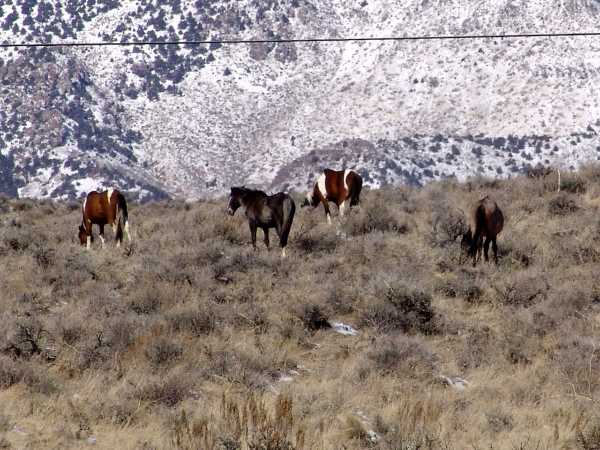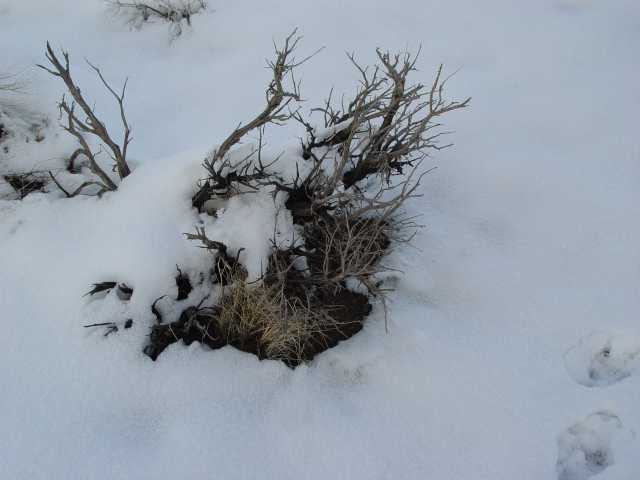|
Crooks and Liars
|
|
New Nevada Agriculture Director
Takes Aim at Wild Horses
Part Four
|
More lies and Pedaling Backwards
The following statements were taken verbatim from the
Reno Gazette-Journal on April 12, 2008.
Nevada's Agriculture Department director said wild horses could be starving in mountains near Virginia City because not much vegetation remains and because the area has about 1,000 more horses than it can handle.
Director Lesperance's revised statement is that wild horses could be starving. Using that same logic, gasoline prices could drop down below the $2.00/gallon level. Either could happen, but practical evidence suggests that neither scenario is likely. However Director Lesperance is still sticking to his lies about range forage and the Virginia and Flowery Ranges' capacities to sustain wild horses.
One of the Department's slight of hand tricks is to cite an old range study that only addressed about 8 percent of the portion of the total range used by the horses, then lead the public to conclude that the capacity figures calculated in the limited study actually reflect the capacity of the entire range. Mr. Lesperance has taken this contrived deception one step further and has actually lied to the public.
Applying the calculations presented in the Virginia Range Wild Horse Management Plan to the entire available range, the range should conservatively support about 1200 horses. This figure is roughly equal to the estimated present population.
The groups and volunteers who actually work with the horses recognize that the Virginia Range herd has to be kept in balance with the range environment, but even during last year's drought, actual "boots on the ground" range evaluations revealed sufficient forage for all the horses and wildlife presently living on the Virginia and Flowery Ranges.
World recognized wildlife ecologist Craig Downer teaches volunteers how to
sample and calculate range forage using the line-intercept method.

Back Pedal #1.
Lesperance said the state has never fed wild horses unless they're being housed in a corral.
This is an interesting change of position since this whole issue started with the Director's statement, "The State can't afford to buy hay to feed stray horses."
Ten Mile Hill horses in their winter grazing area.

Grasses that horses find in winter that humans seldom notice.

Back Pedal #2.
An average of five to 30 horses are in the Carson City corral on a daily basis and the state has no trouble feeding and housing them at about $4.60 per horse, per day.
First off, "Five to 30" is not an average. It's a range.
At least the Director appears to finally have recognized that most of the horses he previously claimed in the state corrals were "unwanted" are actually part of a University sponsored birth control study, that the wild horse groups have managed to get nearly all of the other horses either placed with cooperative landowners or are holding them for adoption. But Director Lesperance apparently still had to slip a phoney number into his "average" so his initial hysteria didn't seem contrived. Come on, Director. Admit you have about a half-dozen horses in the corral that your department is responsible for, all of which could be placed if you didn't want to manufacture a crisis. (We have verified the actual count.)
Concerned taxpayers ask why the Interim Finance Committee should allocate additional funds to the Department if there really is no crisis and the Department has no trouble feeding and housing the horses that they bring in? We have a state-wide funding crisis and the money could clearly be better spent elsewhere.
The one point upon which wild horse advocates and the Director are in absolute agreement involves residents illegally feeding wild horses. The wild horse groups have plenty of emergency resources that can be deployed should the Virginia Range Estray Manager identify a starvation problem. "Casual" feeding of wild horses encourages many bands to hang around for easy hand-outs instead of following their instinctive behaviors and disburse their grazing pressure across the range as the seasons change. Horses eat flash fuels and these animals shouldn't be discouraged from helping reduce the region's fire danger.
The Carson River Roans in their winter grazing area.

Fire Dept. request to preserve horses for public safety / fire control.

The spirit of Thomas Paine lives

| 





